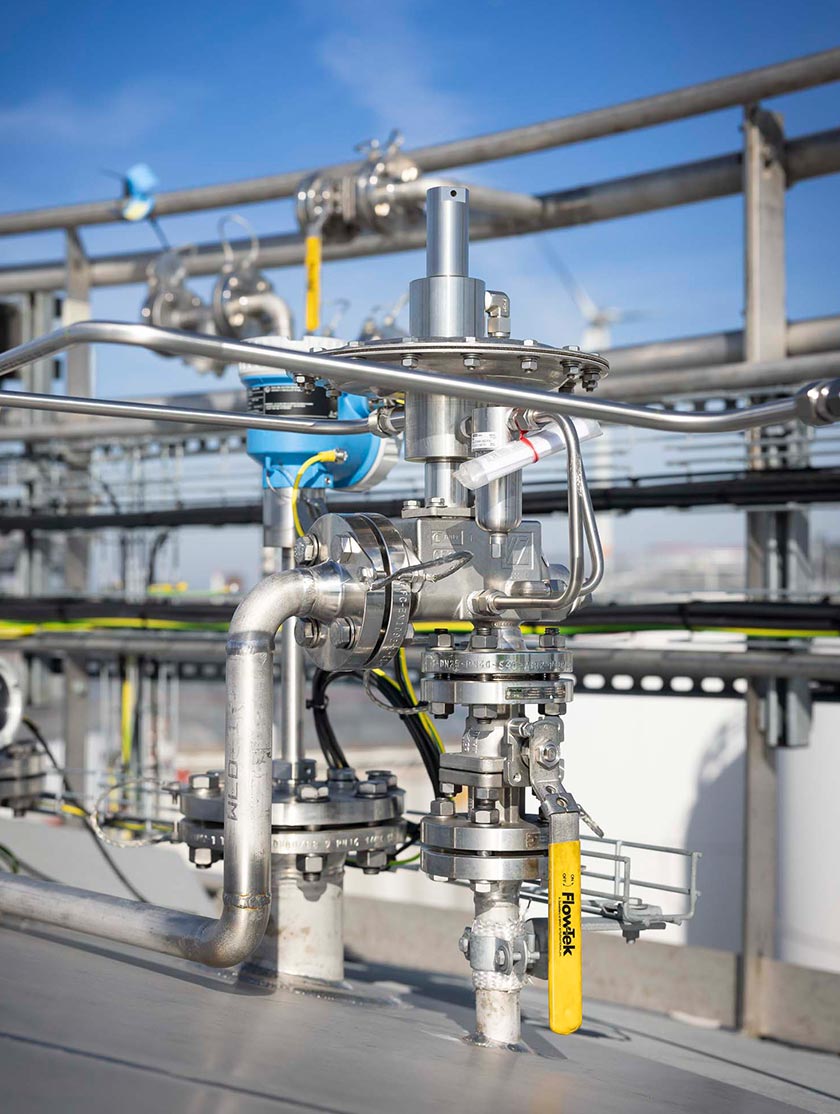Engineers' Guide to Flame Arrestors: Understanding Pressure and Velocity Data
Flame arrestors are critical elements in the safety design of industrial processes involving flammable liquids or gases. These devices are installed in pipelines or storage tanks to prevent the spread of flames in the event of an explosion or fire. Therefore, they play a vital role in protecting personnel, equipment, and the environment from the potentially devastating consequences of a fire.
Function and Importance of Flame Arrestors
To ensure the proper functioning of flame arrestors, engineers rely on pressure and velocity data to determine their position. The primary purpose of a flame arrestor is to limit the velocity of a flame front to a safe level. The maximum allowable velocity is typically specified by industry standards such as NFPA 69 or ISO 16852.
When a flame passes through a narrow passage such as the mesh or parallel plates of a flame arrestor, its velocity is reduced due to friction and turbulence. The extent of this effect depends on the flow rate and the physical properties of the fluid, including its viscosity and density.
Using Pressure and Velocity Data
Engineers use pressure data to evaluate the pressure drop across the flame arrestor, which is directly related to the flow rate. A sudden and significant increase in pressure indicates that the flame front is impinging on the device and the silencer may be reaching its maximum capacity. In this case, the suppressor should be placed farther away from potential ignition sources to prevent excessive backpressure buildup.
On the other hand, a lower than expected pressure drop may indicate a lower than expected flow rate or a blockage in the line. In such cases, engineers can consider installing a different suppressor or adjusting the process parameters.
Placement Considerations
The location of flame arrestors also depends on the pressure and temperature conditions of the facility. High temperatures can compromise the structural integrity of the device, and high pressure can cause failures. Therefore, engineers must consider operating conditions when sizing and placing silencers. In some cases, multiple silencers may be required to provide adequate protection in different scenarios.
Summary
In summary, flame arrestors are important safety devices used by engineers to protect industrial processes from fires and explosions. By analyzing pressure and velocity data, engineers can determine the optimal placement of these devices to ensure their effectiveness and overall process safety. By adhering to industry standards and guidelines, engineers can effectively mitigate the risks associated with flammable liquids and gases and create safer work environments.
Looking for The Right Flame Arrestor? Get Expert Help Choosing the Ideal Arrestor Engineered To Fit Your Needs |
Cashco’s flame arrestors are engineered to stop the propagation of flames in gas piping systems, helping protect equipment, personnel, and facilities. For more information about Cashco's arrestors, view all models here .
Cashco is dedicated to ensuring you select the best solution for your tank protection needs. Need help choosing the right flame arrestor? Contact us and our experienced team will gladly assist you in finding the ideal product!
Why Flame Arrestors Matter |
Cashco Flame Arrestors are specifically engineered to match the explosive mixtures Maximum Experimental Safe Gap, in order to ensure complete extinction of the flame.



